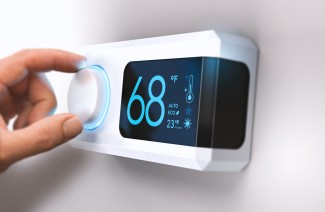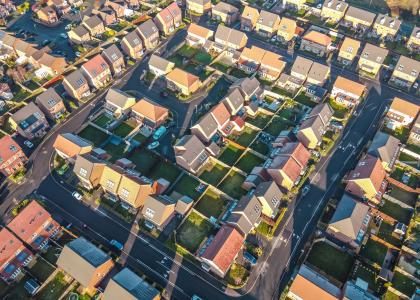Smart technologies can reduce a building’s energy use by nearly a fifth and yield additional benefits, such as increased worker productivity, according to our new report, Smart Buildings: a Deeper Dive into Market Segments. This report documents how many types of buildings — not just the biggest and ritziest — can benefit from the latest interconnected technologies, from simple occupancy sensors to complex energy management and information systems. It builds on our report from early 2017, Smart Buildings: Using Smart Technology to Save Energy in Existing Buildings.
So far, large showcase buildings with robust budgets have been the first to embrace smart technologies. Yet to achieve substantial energy savings in the commercial building sector others will need to adopt them as well. We calculate that smart technologies will save an estimated 8-18% of total energy consumption in subsectors that include Class B offices, small chain and independent retail stores, middle-tier franchise hotels, and regional nonteaching hospitals. Of course, actual savings will depend on a variety of factors; we provide estimates of average expected savings based on publicly available information and EIA’s Commercial Building Energy Consumption Survey data.
The four subsectors we studied — office, retail, hotels, and hospitals — already demonstrate notable differences in their use of smart technologies. For example, almost three-quarters of the health care sector use a building automation system, while less than 40% of hotels contain them. We find that some subsectors may save more energy than others, but given the wide variety of emerging technologies, all can benefit. Below is a snapshot of each subsector, including its average estimated energy savings from adopting smart technologies.
How do buildings benefit from being “smart”?
Offices (18% average savings) come in all shapes and sizes, and technology is dramatically changing how employees use these buildings. Improved audio and video technology means that office workers telecommute more often. Smart technologies like occupancy sensors, smart thermostats, and HVAC and lighting controls can help reduce energy usage in unoccupied offices, conference rooms, and other spaces. Smart systems have been shown to improve worker productivity and even increase property value.
Retail stores (14% average savings) are undergoing their own transformations to stay competitive with online retailers, often focusing on improved customer experience and engagement. Smart energy management systems, thermostats, and lights can help reduce energy consumption and create a more comfortable and attractive environment for customers. Certain types of occupancy sensors, like indoor positioning systems, can also provide a retailer with valuable data on customer behavior in the store.
Hotels (8% average savings) have embraced technologies like guest management systems and mobile check-in. These technologies can work hand in hand with energy-saving smart technologies that control guest room HVAC systems and window shading. Smart controls can also help reduce energy from lighting and HVAC in conference areas and pumps in pool and spa areas. Smart hotels use apps and other technologies to provide guests with a more customized experience, which in turn can improve the hotel’s revenue.
Hospitals (14% average savings) increasingly use technology to ensure patient safety, from electronic health care management systems to wearable health monitors. Because hospitals typically operate 24/7 and rely on significant mechanical equipment to maintain patient health and comfort, they are also the most energy-intensive type of commercial building. Smart technologies can help address the long operating hours and high equipment loads. For instance, smart lighting systems can reduce energy use and increase patient comfort by better matching light output to occupancy and user needs. Without wasting energy, smart sensors and ventilation controls can maintain the ventilation needed to prevent the spread of diseases.
What does the future hold?
Industry, government, and program administrators will need to collaborate to overcome barriers to smart buildings, such as interoperability, cybersecurity, and workforce training. To increase uptake in the market, we recommend that efficiency program administrators leverage the data that smart devices are already collecting. (Some in the industry say that the most valuable resource may no longer be oil, but data.) Smart buildings of the future will seamlessly integrate into our everyday lives, saving energy and optimizing occupant experience and comfort. As more buildings become smart, they will connect to smart grids, smart vehicles, and other components. Our report describes how incorporating smart technologies into commercial buildings now can help create smart cities of the future.




